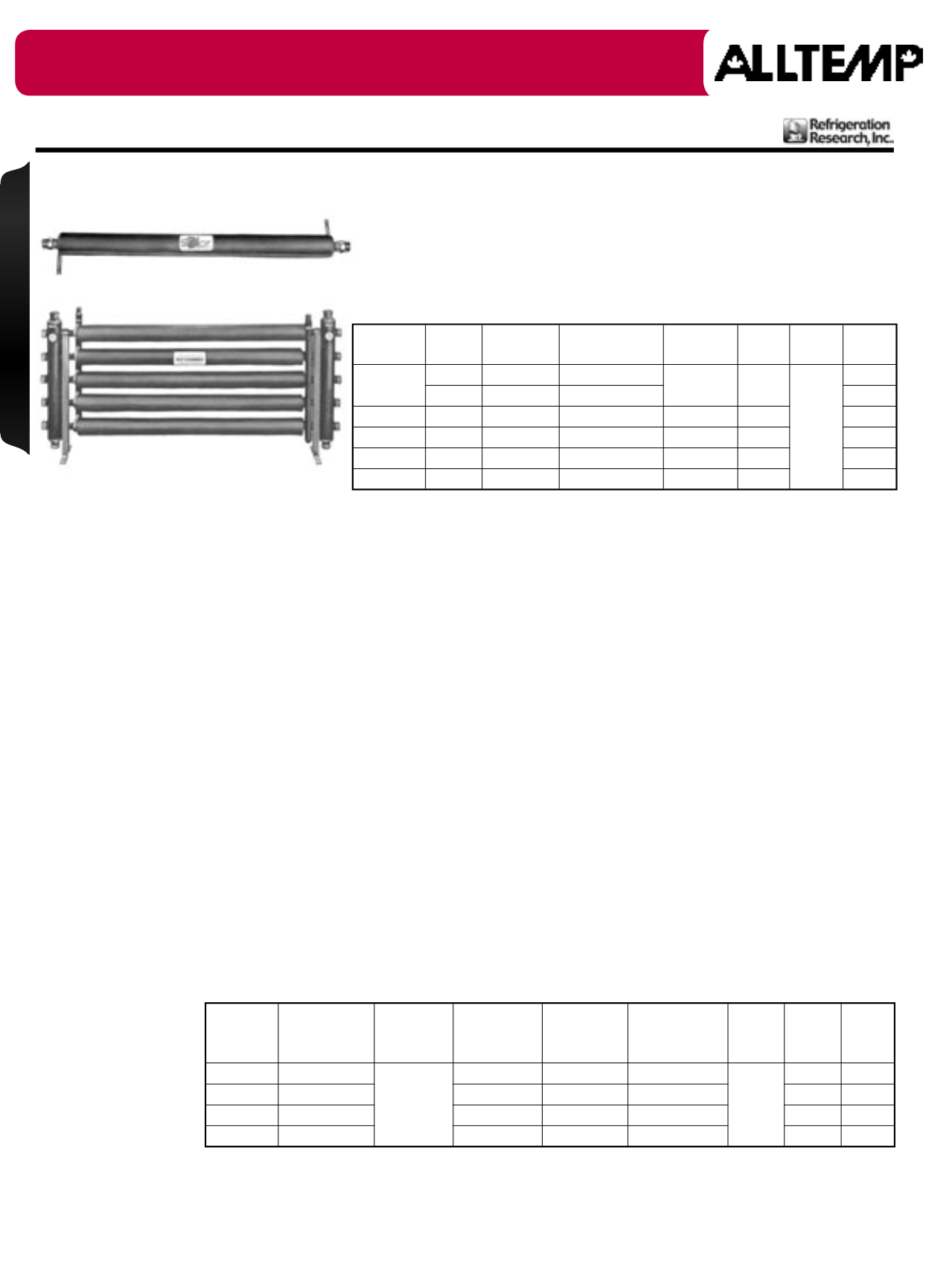
41
Refrigeration
Double Wall Cleanable
Part # System
Max BTU/
Hr. Heated
Max Gal. to be
Heated 100°F
Horizontal
Tubes
Height Length
Weight
(lbs.)
49-5969
1 ton
2400
2.9
1
4.5"
37.0"
4.0
2 ton
4800
5.8
4.0
49-5975
3 ton
7200
8.7
2
10.5"
9.0
49-5976
5 ton 12000
14.4
3
14.5"
14.0
49-5977
71⁄2 ton 18000
21.5
4
18.5"
19.0
49-5978
10 ton 24000
29.0
5
22.5"
24.0
Desuperheating Heat Exchangers
Double Wall Cleanable
These practical double wall desuperheating heat exchangers are of
non-ferrous construction and provide a new standard of flexibility and
convenience. These units are used where local codes call for double
wall type heat exchangers. The entire inner surface is quickly cleaned
of water deposits with a wire brush by simply removing screw caps and
standard washers. There are no bolts and gaskets to remove.
Superheated Refrigerant Gas To Water
Part #
Refrigeration
Tons
Water Line
Opening
Refrig.
Gas Line
Opening
Max BTU/Hr.
Water
Heated
Max Gal. to be
Heated 50°F
to 50°F/ Hr.
Shell
Dia.
Length
Weight
(lbs.)
49-5836
3
5/8"
5/8"
7200
8.7
5.0"
9.0"
11.0
49-5837
5
7/8"
12000
14.4
13.0"
15.0
49-5838
71⁄2
1 1/8"
18000
21.5
18.0"
20.0
49-5839
10
1 3/8"
24000
29.0
23.0"
25.0
Desuperheating heat exchangers of smaller sizes are available on special request
Superheated Refrigerant Gas To Water
• Commercial refrigeration compressors can be used to provide an abundance of water at 150° (or even 180°)
while at the same time doing its intended refrigeration job and at a saving of perhaps 8 to 10% of the electrical
power it would normally require. This is accomplished by installing a heat exchanger designed for interchange
of heat between super-heated refrigerant gas and water. Such a system provides significant energy savings at a
comparatively low investment cost.
• This type of exchanger is installed in the discharge line between the commercial refrigeration compressor and the
condenser, whether it be water or air cooled style.
• In an ordinary commercial refrigeration system almost 30% of the condensers work is spent reducing the
superheated gas temperature to the condensing temperature. The balance of the condensers job is condensing
the gas to liquid and sub-cooling it.
• Therefore, if the above mentioned heat exchanger is designed to pick up only the heat of the superheat it is
assured that only high temperature water will be provided. At the same time if the existing water or air cooled
condenser does not have to handle the heat of superheat, it has additional capacity and the condensing
temperature and pressure will drop causing the compressor to require less power.
• Over sizing the heat exchanger would cause it to act somewhat as a water cooled condenser and the temperature
of the water to be heated would be much lower.
• With the addition of this type of heat exchanger it is also advisable to add an insulated hot water storage tank of
ample capacity.
• Usually these heat exchangers should be installed on commercial systems using automatic or thermostatic
expansion valves. Installation must always be made by a qualified refrigeration service engineer. If installation is
made on a capillary fed system it should be under the direction of a refrigeration engineer having knowledge of
capillaries.
Applications
• Commercial refrigeration
• Heat pumps
• Milk coolers
• Air conditioning, etc.
49-5969
1 &2 Ton
49-5978
10 Ton
Heat Exchangers


